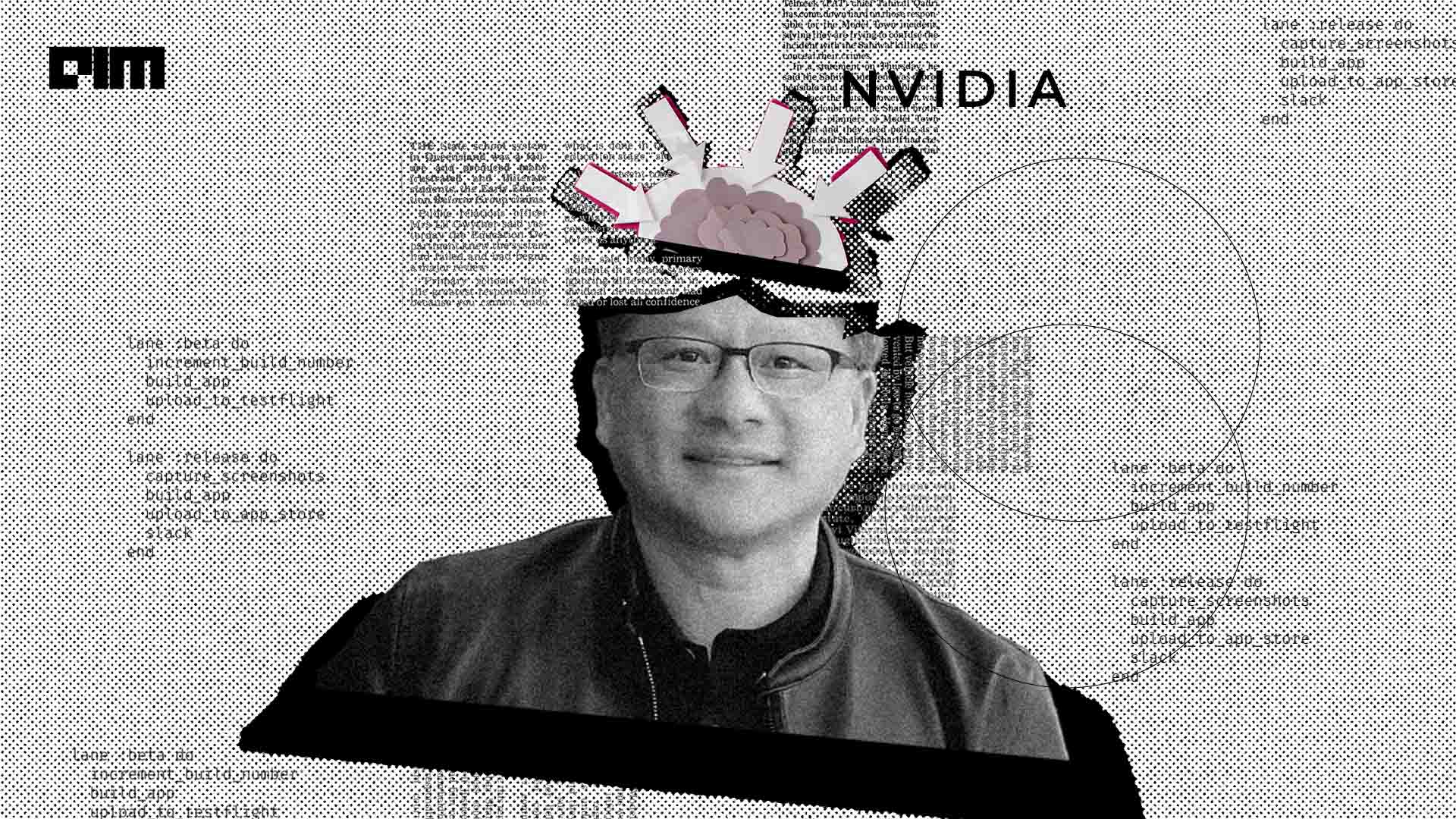
“Run, don’t walk. Either you are running for food, or you are running from becoming food.” Jensen Huang’s recent speech to the graduating students of National Taiwan University (NTU) comes at a time right when NVIDIA is soaring high with its recent market cap valuation of close to $1 trillion. Of the many things that Jensen Huang addressed, including how an AI revolution has begun, the company’s resilience and future-thinking have made it what it is today in spite of the company reaching the brink of failure three times in as many decades.
Evolving Times
The fast pace with which technology is evolving has seen the invention of many things. As Huang pointed out, in the last 40 years, “we created the PC, internet, mobile and now an AI era”. He emphasised on how the AI we see now will be revolutionised, reborn and ready for new ideas.
With the accelerated pace of AI development, the scope for AI to create new jobs will go up and bring forth jobs that never existed, such as prompt engineering, AI factory operations, and AI safety engineers. He clarified that though there’s some worry about AI taking away jobs, it won’t actually be AI, but “someone who is an expert with AI” that may take your job away.
Carving a Niche
The company has always been a step ahead when it comes to innovating and breaking the market. NVIDIA has been successful in staying ahead of the curve by taking huge risks and going against the tide. In his NTU speech, Huang spoke about one of the biggest risks the company took in 2010. When every company was fighting to be a part of the phone market, NVIDIA, instead of trying to fight for a market share in the segment, retreated from it. “A strategic retreat that paid off,” he affirmed.
By not pursuing the phone market, the company went on to invent new things. NVIDIA envisioned creating a new type of computer with “neural network processors, safety architectures that run AI algorithms”. This was at a time when it was a “zero billion dollar market”. NVIDIA’s CUDA was released in 2007 and had been integrated into their GPUs despite initial criticism. Owing to the high cost of CUDA, the company took a huge hit on their profits for many years, however, it paid off as it became instrumental in machine learning.
Upfront about Failures
NVIDIA was on the verge of one of the biggest failures during its initial days. It had partnered with Sega to provide 3D chips for its new gaming console. However, the company realised that its architecture was wrong and the only way ahead was to back out from it. No matter how embarrassing it was, the company was upfront about its shortcomings and asked Sega to find another partner, and even requested them to pay them as a whole, or else the company would be out of business. With Sega agreeing, NVIDIA had a breather for six months when they built RIVA 128 which Huang believes “shocked the 3D market, put us on the map, and saved the company”. A simple act of confronting its mistake and asking for help ensured NVIDIA thrived.
Scaling New Heights
Almost touching $1 trillion, making it the 7th company in the world to reach a trillion dollar market, NVIDIA’s stock rose more than 25% to $383.43 owing to an optimistic financial earnings which calls out high chip demand because of the AI boom. The huge numbers are unparalleled and only Apple and Amazon have managed to reach a daily increase of $190 billion in the past.
With a few hiccups in the company’s 30 year journey, their unprecedented growth seems unstoppable. Huang spoke at the keynote for the Computex conference in Taiwan yesterday where he outlined the GPU’s plan for the AI-powered future. From advancing AI compute with Grace Hopper supercomputers, creating autonomous robots with Isaac AMR to powering 5G and 6G in Japan, the company made various announcements at the conference. Huang unveiled DGX GH200, which brings together 256 Grace Hopper chips into a single GPU and also announced their plan to create their own supercomputer called Helios which will utilize 4 DGX GH200 systems linked together.
A couple of months ago, NVIDIA announced its partnership with Google Cloud which will integrate L4 GPU with Vertex AI to help companies build generative AI applications.
The post In 30 years, NVIDIA died almost 3 times appeared first on Analytics India Magazine.